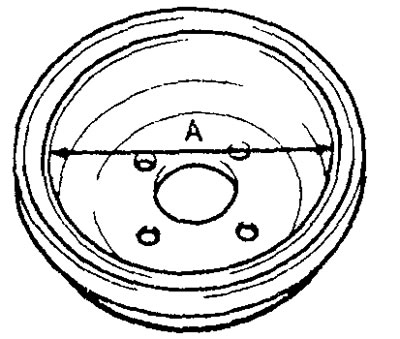Checking the thickness of the lining of the drum brake shoes
1. Remove the brake drum.
2. Measure the parking brake pad lining thickness at the point of greatest wear.
Nominal value - 4.3 mm
Maximum allowable value - 1 mm

3. If the lining thickness is less than the maximum permissible value or uneven wear is observed, then it is necessary to replace the brake pads as a set.
Attention:
- If it is necessary to replace the brake pad and lining assembly, replace the entire set of brake pads on the left and right sides of the vehicle to avoid uneven braking force on the right or left wheels and causing the vehicle to skid when braking.
- If there is a significant difference in the degree of wear (thickness) brake pads on the left and right wheels, then it is necessary to check the operation of the working brake cylinders.
Checking the inner diameter of the brake drum
1. Remove the brake drum.
2. Measure the inner diameter of the brake drum at two or more points.
Rated value - 203 mm
Maximum allowable value - 205 mm

3. If the wear of the brake drum exceeds the limit, or the brake drum has a significant imbalance, then it is necessary to replace the brake drum and brake shoes as an assembly.
Checking the fit of the brake pads to the surface of the brake drum
1. Remove the brake shoes and brake drum assembly.
2. Apply chalk to the inner surface of the brake drum and run the brake shoe over it.
3. If the contact patch is uneven, then replace the brake drum or brake shoes as a set. Note: After checking, remove the chalk from the inner surface of the brake drum and from the surfaces of the brake pads.

